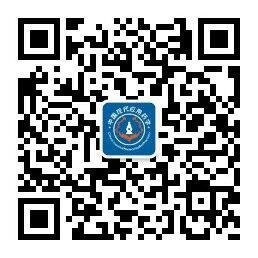| 引用本文: | 王云龙,陈诗,鲁灵玉,陈盛虎,万松彤,葛月宾.层次分析联合熵权法的艾叶挥发油质量标志物研究[J].中国现代应用药学,2025,42(5):16-26. |
| wangyunlong,chenshi,lulingyu,chenshenghu,wansongtong,geyuebin.Research on Q-markers of volatile oil from Artemisiae Argyi leaf by analytic hierarchy process combined entropy weight method[J].Chin J Mod Appl Pharm(中国现代应用药学),2025,42(5):16-26. |
|
| 摘要: |
| 目的? 艾叶油的质量控制一直是其生产应用的难点,本文应用层次分析法(Analytic Hierarchy Process,AHP)-熵权法(Entropy Weight Method,EWM),结合网络药理学方法,研究艾叶油潜在的质量标志物(Q-marke)),为其质量控制提供参考。方法? 从中药质量标志物的基本原则出发,应用层次分析-熵权法对艾叶油的质量标志物进行量化辨识,AHP法应用于要素层的权重分析,EWM法分析各要素层下控制层的权重分析。控制层中的有效性指标根据网络药理学中各成分对应的靶点数、通路数与支持文献选取;可测性指标来源于GC-MS中的各成分平均含量、相对标准偏差及相关文献;特有性指标为含有该化合物的植物数。结果? 以建立的中药质量标志物量化辨识体系为筛选条件,共遴选龙脑、β-石竹烯、桉油精、丁香酚、左旋樟脑、α-蒎烯、大根香叶烯D、β-蒎烯、水合桧烯、萜品烯-4-醇、α-侧柏酮等11种成分作为艾叶油的质量标志物。结论? 基于质量标志物的有效性、可测性、特有性,确定的11种质量标志物能较全面反映艾叶油的品质,为艾叶挥发油的质量控制提供参考依据。 |
| 关键词: 艾叶挥发油 质量标志物 量化辨识 质量评价 层次分析 熵权法 |
| DOI: |
| 分类号:R283.6????? |
| 基金项目:湖北省中医药管理局中医药科研项目(ZY2023Z022) |
|
| Research on Q-markers of volatile oil from Artemisiae Argyi leaf by analytic hierarchy process combined entropy weight method |
|
wangyunlong1, chenshi1, lulingyu1, chenshenghu2, wansongtong3, geyuebin3
|
|
1.South-central Minzu University;2.Fruit and Tea Office of Hubei Province;3.Agriculture Service Center of Changyang County
|
| Abstract: |
| ABSTRACT: OBJECTIVE The quality control of volatile oil from Artemisiae Argyi leaf (VOAA) is always difficult for its production and application. This paper was purposed to study the potential quality markers (Q-markers) of VOAA by the Analytic Hierarchy Process (AHP)-Entropy Weight Method (EWM) combined with network pharmacology method, which provided a reference for the quality control of VOAA. METHODS According to the basic principles of Q-markers of traditional Chinese medicine, the AHP and EWM was used to identify and quantify the Q-markers of VOAA. The former was applied to the weight analysis of the element layer, and the latter was to the weight analysis of the control layer under each element layer. The efficiency index in the control layer was selected according to the number of targets, pathway numbers and supporting literature corresponding to each component in network pharmacology. The measurability index was derived from the average content, coefficient of variation and related literature of each component in GC-MS. The endemic index was the number of plants containing the compound. RESULTS Eleven components, including dipterocarp, β-caryophyllene, eugenol, L-camphor, α-pinene, genanthene, genanthene D, β-pinene, juniperene hydrate, 4-terpineol and α-thujone, were successfully chosen as Q-markers of VOAA. CONCLUSION Based on the effectiveness, quantifiability and uniqueness of Q-marker, the 11 quality markers identified can fully reflect the quality of mugwort leaf oil, and provide a reference for the quality control of VOAA. |
| Key words: volatile oil of Artemisiae Argyi leaf quantitative identification Q-markers quality evaluation analytic hierarchy process, entropy weight method |
